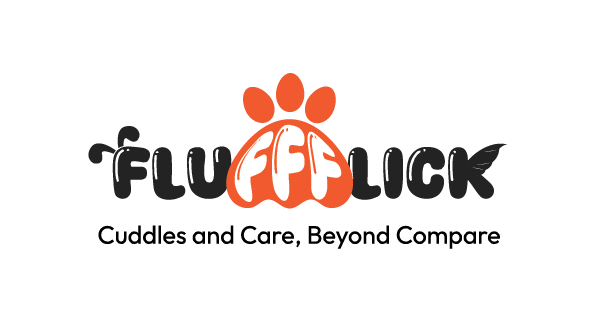Creating a safe and welcoming environment for your pets is essential for their well-being and your peace of mind. From choosing the right flooring to ensuring hazardous items are stored safely, there are many considerations when pet-proofing your home. This guide provides practical tips on selecting pet-safe flooring and furniture, storing hazardous items, choosing safe toys and chews, creating a calm environment, installing window perches for cats, and incorporating pet-safe plants.
1. Choose Pet-Safe Flooring and Furniture
Your choice of flooring and furniture can significantly impact your pet’s safety and comfort. Here are some recommendations to keep in mind:
a. Pet-Friendly Flooring
- Durability: Choose scratch-resistant flooring such as tile, laminate, or luxury vinyl. These materials can withstand the wear and tear of pets and are easy to clean.
- Non-Slip Surfaces: Opt for non-slip flooring or add area rugs with non-skid backing to prevent slips and falls, especially for older pets.
- Carpet Considerations: If you prefer carpet, choose a low-pile option that’s easier to clean. Stain-resistant carpets are also a good choice for homes with pets.
b. Pet-Safe Furniture
- Durable Fabrics: Choose furniture made with pet-friendly, durable fabrics such as leather, microfiber, or outdoor-rated upholstery. These materials are easier to clean and less likely to attract pet hair.
- Avoid Sharp Edges: Select furniture with rounded edges to prevent injuries if your pet bumps into them.
- Removable Covers: Consider furniture with removable, washable covers for easy maintenance.
2. Store Hazardous Items Safely
Many common household items can be dangerous for pets. Proper storage and awareness are key to preventing accidents.
a. Secure Cabinets and Drawers
- Use child-proof latches on cabinets and drawers that contain cleaning supplies, medications, and chemicals to keep curious pets from accessing them.
b. Store Food Safely
- Keep human food out of reach, as many items (like chocolate, onions, and grapes) are toxic to pets. Use sealed containers for pet food to prevent contamination and discourage pests.
c. Hide Electrical Cords
- Secure electrical cords and wires to prevent pets from chewing on them. Cord protectors or double-sided tape can help deter chewing.
d. Proper Disposal of Trash
- Use a trash can with a secure lid, or keep trash cans behind closed doors to prevent pets from rummaging through garbage and ingesting harmful items.
3. Choose Safe Toys and Chews
Not all toys and chews are created equal. It’s essential to select items that are safe and appropriate for your pet’s size and chewing habits.
a. Dog Toys and Chews
- Durable Materials: Choose toys made from durable materials like rubber or nylon, especially for heavy chewers.
- Avoid Small Parts: Avoid toys with small parts that can be swallowed or pose a choking hazard.
- Appropriate Size: Select toys that are the right size for your dog to prevent them from accidentally swallowing or choking on them.
b. Cat Toys
- Avoid Strings: Avoid toys with loose strings or ribbons, as these can be ingested and cause intestinal blockages.
- Choose Interactive Toys: Opt for toys that encourage natural hunting behaviour, such as feather wands, laser pointers, or balls.
4. Create a Calm Environment
A calm environment can help reduce anxiety and stress for pets, especially in multi-pet households or homes with children.
a. Designate Quiet Spaces
- Provide your pets with quiet areas where they can retreat when they need rest or feel overwhelmed. This can be a cozy bed, crate, or a separate room.
b. Use Calming Aids
- Consider using calming aids such as pheromone diffusers, calming collars, or relaxing music designed for pets.
c. Establish a Routine
- Pets thrive on routine. Regular feeding, playtime, and potty breaks can help reduce anxiety and promote a sense of security.
5. Window Perches for Cats
Cats love to observe the outside world. Window perches provide mental stimulation and a comfortable spot for sunbathing.
a. Secure Installation
- Ensure the perch is securely installed and can support your cat’s weight. Use strong suction cups or brackets for stability.
b. Comfortable Padding
- Choose a perch with soft, washable padding for added comfort and ease of cleaning.
c. Safe Location
- Place the perch in a safe location away from potential hazards like open windows or blinds with cords.
6. Use Pet-Safe Plants
Many common household plants are toxic to pets. Choose non-toxic, pet-safe plants to brighten up your home without putting your pets at risk.
a. Pet-Safe Plant Options
- Spider Plant: Non-toxic to cats and dogs and easy to care for.
- Boston Fern: Safe for pets and adds a lush, green touch to your home.
- Areca Palm: A pet-friendly palm that’s great for adding a tropical feel.
- Calathea: Beautiful foliage and safe for both cats and dogs.
b. Avoid Toxic Plants
- Avoid plants like lilies, philodendrons, and pothos, which are toxic to pets. Research any plant before bringing it into your home.
c. Use Plant Stands and Shelves
- Place plants out of reach or use plant stands and shelves to keep curious pets away.
Conclusion
Creating a pet-friendly home involves thoughtful planning and making choices that prioritize your pet’s safety and comfort. By choosing pet-safe flooring and furniture, storing hazardous items securely, selecting appropriate toys and chews, creating a calm environment, providing window perches for your cats, and incorporating pet-safe plants, you can create a safe and welcoming space that both you and your pets will enjoy. Regularly assess your home for potential hazards and make adjustments as needed to ensure a happy and healthy environment for your furry companions.

